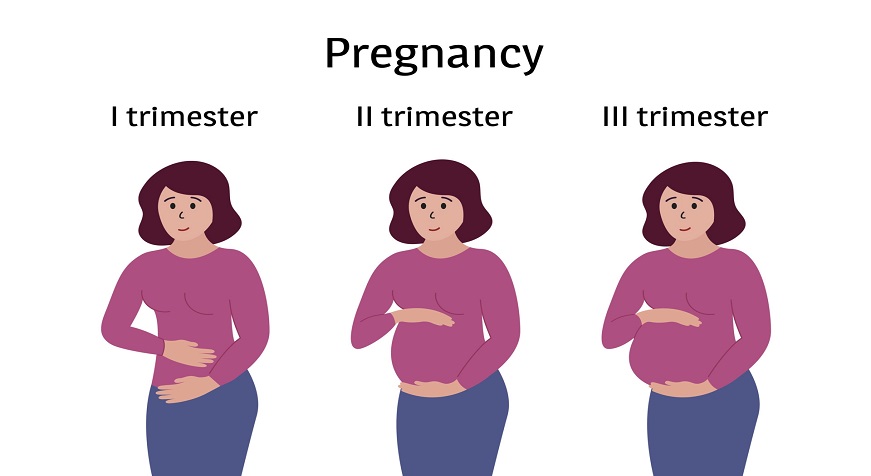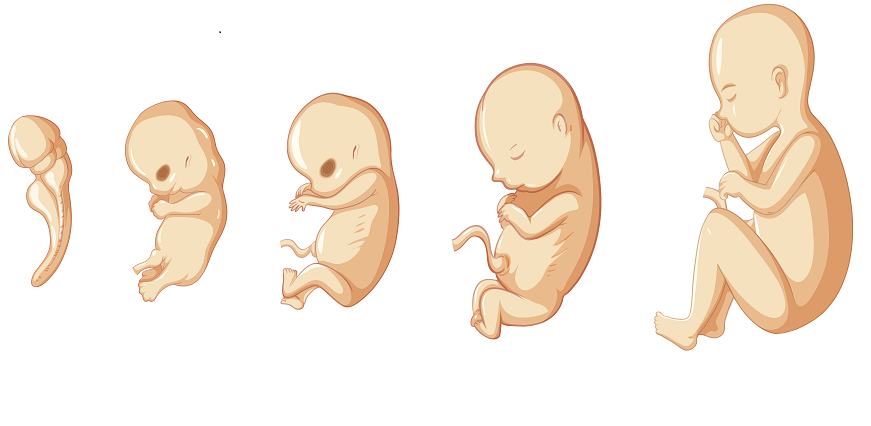Queries about this test
- Ans: The phrase "screen negative" in a double marker test report denotes a low chance of chromosomal abnormalities for the fetus. It follows that the test findings fall within the expected range.
- Ans: इस ब्लड टेस्ट का प्राथमिक उद्देश्य विकासशील भ्रूण में अनुवांशिक विसंगतियों की तलाश करना है। सबसे सटीक निष्कर्ष प्राप्त करने के लिए यह समय सीमा गर्भावस्था के आठवें और चौदहवें सप्ताह के बीच है।
- Ans: The double marker test is a basic blood test, and no special procedures, such as fasting before sample collection, are necessary. Unless the doctor has directed otherwise, the pregnant woman can eat and drink normally.
- Ans: Between the eighth and fourteenth weeks of gestation, this blood test is performed to check for chromosomal anomalies.
- Ans: गर्भावस्था के दौरान बच्चे में किसी भी न्यूरोलॉजिकल विकार की पहचान करने के लिए डबल मार्कर टेस्ट किया जाता है। यह एक प्रेडिक्टिव टेस्ट है जो पहली तिमाही की स्क्रीनिंग का एक हिस्सा है
Customer reviews
4.67 out of 5Review this test
Share your thoughts with others
How Does Home Sample Collection work?

Lab Tests Near You
-
Lab Test in Colaba
Lab Test in Andheri West
Lab Test in Vileparle West
Lab Test in Mira Road East
Lab Test in Bora Bazar
Lab Test in Kandivali West
Lab Test in Yashwant Gaurav Complex
Lab Test in Nalasopara
Lab Test in Mira Bhayandar
Lab Test in Bhayandar East
Lab Test in Bhayandar West
Lab Test in Borivali West
Lab Test in Borivali
Lab Test in Andheri
Lab Test in Bandra
Lab Test in Bhandup
Lab Test in Byculla
Lab Test in Chembur
Lab Test in Churchgate
Lab Test in Colaba
Lab Test in Dadar
Lab Test in Dahisar
Lab Test in Ghatkopar
Lab Test in Goregaon
Lab Test in Jogeshwari
Lab Test in Juhu
Lab Test in Kandivali
Lab Test in Khar
Lab Test in Kurla
Lab Test in Lal Baug
Lab Test in Mahim
Lab Test in Malad
Lab Test in Matunga
Lab Test in Mulund
Lab Test in Mumbai Central
Lab Test in Powai
Lab Test in Prabhadevi
Lab Test in Santacruz
Lab Test in Thane
Lab Test in Vikhroli
Lab Test in Vile Parle
Lab Test in Wadala
Lab Test in Worli
Lab Test in Tardeo
Lab Test in Marine Lines
Lab Test in Kharghar
Lab Test in Lokhandwalla
Lab Test in Sion
Lab Test in Ulhasnagar
Lab Test in Hiranandani Estate
Lab Test in Oshiwara
Lab Test in CBD Belapur
Lab Test in Nerul
Lab Test in Miraroad
Lab Test in Versova
Lab Test in Parel
Lab Test in Virar
Lab Test in Vashi
Lab Test in Airoli
Lab Test in Sanpada
Double Marker Near You
-
Double Marker in Colaba
Double Marker in Andheri West
Double Marker in Vileparle West
Double Marker in Mira Road East
Double Marker in Bora Bazar
Double Marker in Kandivali West
Double Marker in Yashwant Gaurav Complex
Double Marker in Nalasopara
Double Marker in Mira Bhayandar
Double Marker in Bhayandar East
Double Marker in Bhayandar West
Double Marker in Borivali West
Double Marker in Borivali
Double Marker in Andheri
Double Marker in Bandra
Double Marker in Bhandup
Double Marker in Byculla
Double Marker in Chembur
Double Marker in Churchgate
Double Marker in Colaba
Double Marker in Dadar
Double Marker in Dahisar
Double Marker in Ghatkopar
Double Marker in Goregaon
Double Marker in Jogeshwari
Double Marker in Juhu
Double Marker in Kandivali
Double Marker in Khar
Double Marker in Kurla
Double Marker in Lal Baug
Double Marker in Mahim
Double Marker in Malad
Double Marker in Matunga
Double Marker in Mulund
Double Marker in Mumbai Central
Double Marker in Powai
Double Marker in Prabhadevi
Double Marker in Santacruz
Double Marker in Thane
Double Marker in Vikhroli
Double Marker in Vile Parle
Double Marker in Wadala
Double Marker in Worli
Double Marker in Tardeo
Double Marker in Marine Lines
Double Marker in Kharghar
Double Marker in Lokhandwalla
Double Marker in Sion
Double Marker in Ulhasnagar
Double Marker in Hiranandani Estate
Double Marker in Oshiwara
Double Marker in CBD Belapur
Double Marker in Nerul
Double Marker in Miraroad
Double Marker in Versova
Double Marker in Parel
Double Marker in Virar
Double Marker in Vashi
Double Marker in Airoli
Double Marker in Sanpada
Popular Tests in Cbd Belapur
-
Cbc Test Price in Cbd Belapur
D Dimer Test Price in Cbd Belapur
Pregnancy Test Price in Cbd Belapur
Widal Test Price in Cbd Belapur
Hba1C Test Price in Cbd Belapur
Lipid Profile Test Price in Cbd Belapur
Lft Test Price in Cbd Belapur
Thyroid Test Price in Cbd Belapur
Ferritin Test Price in Cbd Belapur
Tsh Test Price in Cbd Belapur
Creatinine Test Price in Cbd Belapur
Fbs Test Price in Cbd Belapur
Dengue Test Price in Cbd Belapur
Uric Acid Test Price in Cbd Belapur
Urine Culture Test Price in Cbd Belapur
Kft Test Price in Cbd Belapur
Vitamin D Test Price in Cbd Belapur
Haemoglobin Test Price in Cbd Belapur
Vitamin B12 Test Price in Cbd Belapur
KFT Test Price in Cbd Belapur
Popular Packages in Cbd Belapur
-
Full Body Health Checkup Package in Mumbai
Pregnancy Test Package in Cbd Belapur
Arthritis Test Package in Cbd Belapur
DNA Test Package in Cbd Belapur
Allergy Test Package in Cbd Belapur
Thyroid Test Package in Cbd Belapur
Liver Function Test Package in Cbd Belapur
HIV Test Package in Cbd Belapur
Kidney Test Package in Cbd Belapur
PCOS Test Package in Cbd Belapur
Lipid Profile Test Package in Cbd Belapur
Infertility Test Package in Cbd Belapur
Vitamin D Test Packages in Cbd Belapur
Antenatal Test Package in Cbd Belapur
Blood Sugar Test Package in Cbd Belapur
Lab Tests in Other Cities
-
Lab Test in Delhi
Lab Test in Rohtak
Lab Test in Hisar
Lab Test in Gohana
Lab Test in Mohali
Lab Test in Chandigarh
Lab Test in Panchkula
Lab Test in Jalandhar
Lab Test in Ludhiana
Lab Test in Amritsar
Lab Test in Dehradun
Lab Test in Haridwar
Lab Test in Rishikesh
Lab Test in Rudrapur
Lab Test in Saharanpur
Lab Test in Noida
Lab Test in Gurgaon
Lab Test in Faridabad
Lab Test in Ghaziabad
Lab Test in Mumbai
Lab Test in Bathinda
Lab Test in Lucknow
Lab Test in Gwalior
Lab Test in Sonipat
Lab Test in Meerut
Lab Test in Pune
Lab Test in Haldwani
Lab Test in Patiala
Lab Test in Panipat
Lab Test in Roorkee
Lab Test in Kanpur
Lab Test in Rewari
Lab Test in Muzaffar Nagar
Lab Test in Varanasi
Lab Test in Ambala
Lab Test in Agra
Lab Test in Mathura
Lab Test in Sirsa
Lab Test in Khanna
Lab Test in Jaipur
Lab Test in Udaipur
Lab Test in Jodhpur
Lab Test in Bengaluru
Lab Test in Hyderabad
Lab Test in Chennai
Lab Test in Nagpur
Lab Test in Ahmedabad
Lab Test in Karnal
Lab Test in Kolkata
Lab Test in Patna
Lab Test in Moradabad
Lab Test in Aligarh
Lab Test in Pathankot
Lab Test in Firozpur
Lab Test in Bhopal
Lab Test in Guwahati
Lab Test in Bhubaneswar
Lab Test in Hoshiarpur














 7982100200
7982100200




 Test Name
Test Name  Also Known as
Also Known as  Sample Type
Sample Type  Gender
Gender  Age group
Age group  This Test Includes
This Test Includes  Price
Price@3x.png)

































 To reach our help desk call 9213188888
To reach our help desk call 9213188888.png)